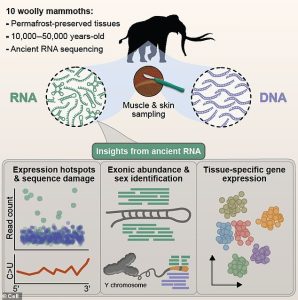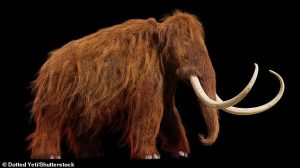Scientists Extract World’s Oldest RNA From Woolly Mammoth, Boosting De-extinction Hopes
Key Takeaways
- World’s oldest RNA successfully extracted from 39,000-year-old woolly mammoth
- Breakthrough could significantly advance de-extinction efforts for mammoths, dodos, and Tasmanian tigers
- RNA reveals active gene functions and biological processes frozen in time
- Discovery opens new possibilities for studying ancient viruses and extinct species biology
In a groundbreaking scientific achievement, researchers have extracted the world’s oldest RNA molecules from the extinct woolly mammoth, marking a significant step forward in de-extinction efforts. The 39,000-year-old genetic material was recovered from exceptionally preserved mammoth tissues in Siberian permafrost by scientists from Sweden and Denmark.
Revolutionary RNA Discovery
The research team successfully isolated and sequenced RNA from a juvenile mammoth named Yuka, representing the oldest RNA ever recovered. This nucleic acid, essential for all biological functions, reveals which genes were active and how they functioned when the mammoth was alive.
Dr. Emilio Mármol from the Globe Institute in Copenhagen explained: “Our methods and results could indeed inform and help the efforts aimed at ‘de-extincting’ certain renowned animals. Scientists will need comprehensive knowledge of extinct species’ biology—not just genetic location but how genes were expressed, regulated and functioning. This is something DNA alone cannot tell.”
Technical Breakthrough and Challenges
Despite analyzing 10 mammoth tissue samples, only three yielded RNA sequences confidently identified as mammoth origin. The researchers faced significant contamination challenges from environmental bacteria and modern human handling.
The successful extraction from Yuka revealed protein-building RNA molecules that controlled muscle contraction and metabolic regulation under stress. The team also discovered evidence that Yuka experienced cell stress before death, likely from predator attacks by cave lions.
New Scientific Frontiers
For the first time, scientists identified microRNAs—gene-regulating molecules—in the ancient samples. Dr. Mármol noted these microRNAs are “completely new to science and probably only expressed in mammoths.”
Published in the journal Cell, the findings demonstrate RNA’s potential to persist across “deep timescales” far longer than previously believed. The research opens possibilities for sequencing ancient RNA viruses like influenza and coronaviruses from Ice Age remains.
About Woolly Mammoths
Woolly mammoths evolved approximately 600,000 years ago and roamed northern Europe, Asia, and North America during the last Ice Age. Standing 13 feet tall and weighing six tons, these elephant relatives became extinct around 4,000 years ago.
The species coexisted with early humans who hunted them for food and used their bones and tusks for tools and art. The exact cause of their extinction remains debated between human hunting and climate change factors.
Future research combining prehistoric RNA with DNA and proteins could “fundamentally reshape our understanding of extinct megafauna,” revealing biological layers frozen in time for millennia.











